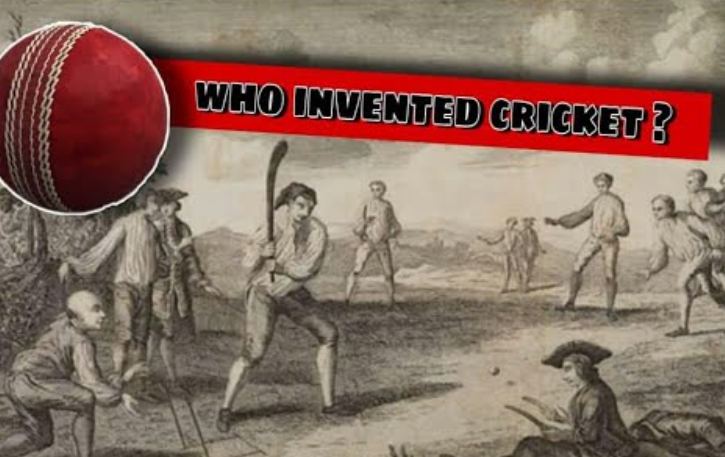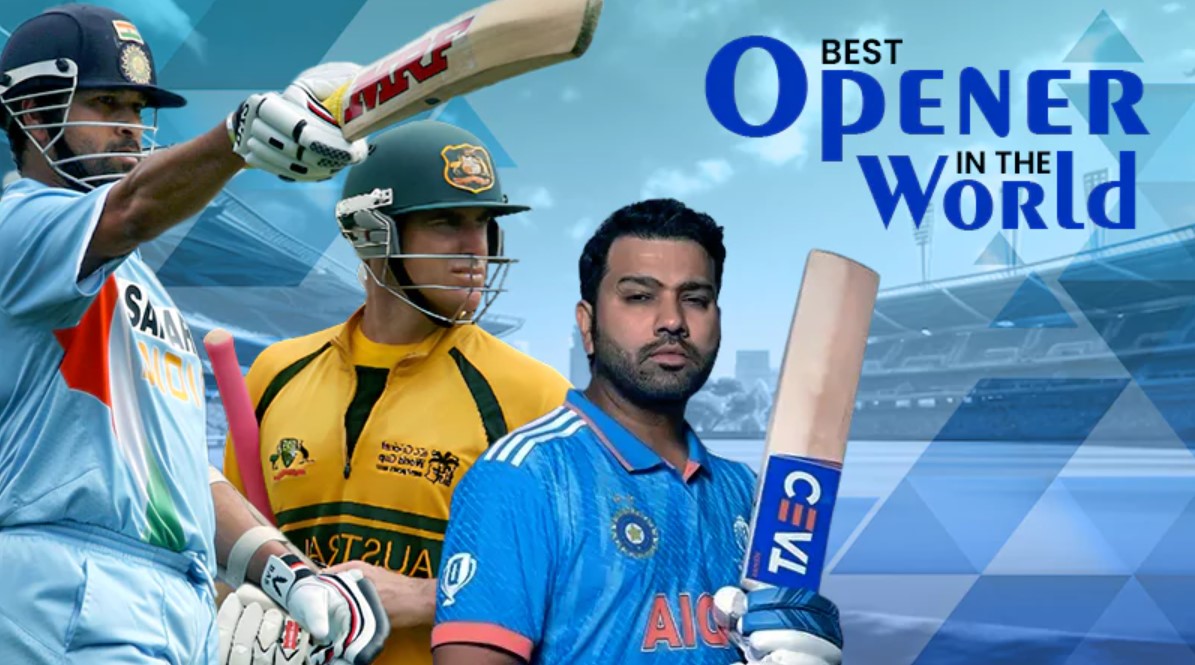Who invented Cricket: a brief history
Have you ever wondered where cricket, one of the world’s most popular sports, originated from? The journey is as intriguing as a nail-biting cricket match itself!
Early Beginnings of Cricket
Cricket, with its genteel image and timeless traditions, has its origins deeply intertwined with the history of England. Its journey from a simple recreational pastime to a meticulously organized and globally cherished sport is a captivating narrative that spans centuries, filled with intriguing tales, heroic figures, and a remarkable evolution.
The name ‘Cricket’: Where did it come from?
The etymology of the word ‘cricket’ remains a subject of spirited debate among historians, adding an element of mystery to the game’s rich history. Some scholars firmly adhere to the notion that the term ‘cricket’ finds its origins in the Old French word ‘criquet,’ which alludes to a type of stick. In contrast, others contend that it is rooted in the Flemish word ‘krick,’ signifying a stick or staff. Irrespective of its precise etymological path, what is undeniable is its unmistakable European lineage, which adds to the allure and intrigue of cricket’s early beginnings.

Ancient games resembling cricket
The origins of cricket can be traced back to a distant era in England, where the game was but a humble precursor to the organized sport we know today. Historians believe that these early incarnations of cricket date as far back as the 13th century. In the bucolic landscapes of South-East England, particularly in the Weald region, children engaged in games reminiscent of cricket. They used rudimentary equipment, such as a lump of sheep’s wool or a simple stone as the ball, while a basic stick or even a tree stump served as the bat.
As time progressed, cricket’s appeal expanded beyond the realm of child’s play. By the late 16th century, adults had embraced the sport, forming teams and setting the stage for more structured and competitive village competitions. This transition marked a significant turning point in cricket’s evolution. Historical records from as early as 1598 mention a game referred to as “creckett” being played by adults at the Free School in Guildford, Surrey. These early mentions provide fascinating glimpses into the gradual transformation of cricket from a pastime into a more organized and widely enjoyed activity.
Cricket’s journey from rural to royal
Cricket’s remarkable journey from its rustic beginnings to its esteemed status in English society is a captivating narrative of rapid evolution. What sets this history apart is the remarkable speed at which cricket transcended its humble origins. By the early 17th century, cricket had already captured the imaginations of the elite, particularly the gentry of England. This marked a pivotal transition in the sport’s trajectory.
The infusion of patronage from the aristocracy and nobility was instrumental in shaping cricket’s future. Their financial support and commitment to providing the necessary infrastructure elevated cricket from a mere pastime to an organized and respected recreation. This transformation paved the way for the establishment of some of the world’s most renowned cricket clubs, including the iconic Marylebone Cricket Club (MCC) in the late 18th century, which emerged as a direct result of this influential patronage.
As cricket’s popularity soared, it underwent a process of refinement and formalization. The once loosely defined rules became more structured, and specialized equipment was developed to enhance the playing experience. The passion for the game grew exponentially, and cricket became an integral part of English culture and society. This enduring journey of cricket from rural origins to royal favor is a testament to the sport’s enduring charm and the profound impact it has had on the world of sports.

Who Invented Cricket in India
The inception of cricket in India is a story deeply rooted in the country’s colonial history, cultural exchange, and a fervent love for the game. Cricket made its way to the Indian subcontinent through the colonial ties between India and the British Empire. What began as a pastime favored by the British elite soon evolved into a sport that would capture the hearts of millions of Indians.
The exact individual responsible for introducing cricket to India remains a subject of historical debate and ambiguity. It’s challenging to pinpoint a single person as the inventor of cricket in India because the sport gradually seeped into the culture and consciousness of the nation over time.
One of the earliest references to cricket in India dates back to the mid-18th century, during the British East India Company’s rule. Cricket matches were played by British soldiers and civilians, primarily in the port cities of Calcutta (now Kolkata) and Bombay (now Mumbai). These early matches were often exclusive affairs, with limited participation from the local Indian population.
As time passed, cricket began to spread beyond the British expatriate community. Indians, particularly the educated elite, started taking an interest in the sport. Prominent Indian cricket clubs and teams began to form in the late 19th and early 20th centuries, and the sport became increasingly accessible to the Indian population.
Cricket’s popularity grew rapidly, and it soon became a unifying force in a diverse and culturally rich country like India. The sport transcended colonial boundaries and played a significant role in fostering a sense of national identity and pride among Indians.
While the inventor of cricket in India may remain nameless, the legacy of the sport and its deep-rooted connection to the nation’s history and culture are undeniable. Cricket has not only become India’s most beloved sport but also an integral part of its social fabric, making it a unique and cherished chapter in the country’s story.

The British Raj and cricket’s advent
The introduction of cricket to India was intricately linked to the era of the British Raj, marking the sport’s humble beginnings on the Indian subcontinent. The seeds of cricket were sown during the colonial rule of the British Empire in India. The earliest recorded cricket match on Indian soil is believed to have taken place in 1721 when British sailors engaged in the game. However, it wasn’t until the late 18th century that cricket started to gain notable prominence and recognition.
In its initial stages, cricket was primarily played by British army personnel, colonial officials, and other members of the British elite residing in India. These early cricket matches unfolded on the sprawling maidans, or open grounds, of major Indian cities. These maidans served as the fertile grounds where the sport took root and began to flourish.
Cricket quickly became a familiar sight in the Indian landscape, with matches often attracting both British and Indian spectators. The sport’s popularity grew steadily as it became a part of the colonial social fabric. The British Raj not only brought cricket to India but also established the institutional framework for the sport’s development. The establishment of cricket clubs, leagues, and competitions, often organized along colonial lines, paved the way for cricket to become an integral part of India’s sporting culture.
As time passed, cricket began to transcend its colonial origins and reach a broader audience. Indians, including the educated elite, started taking an active interest in the game, forming their own clubs and teams. Cricket’s journey in India was marked by a gradual shift from an exclusive British pastime to a sport that resonated with a diverse and evolving Indian society.
The impact of cricket on Indian society, culture, and national identity cannot be overstated. Over the decades, it has grown into more than just a sport; it is a passion, a unifying force, and a source of pride for millions of Indians. Cricket’s advent during the British Raj laid the foundation for what would become one of the most enduring and cherished aspects of Indian sports and culture.
Evolution of cricket in India
The evolution of cricket in India extends beyond its origins as a colonial sport. Initially, cricket in India was perceived as an exclusive pastime reserved for the British elite and Indian royals who associated with them. Cricket clubs were indeed established in major cities like Bombay (now Mumbai) and Calcutta (now Kolkata); however, membership to these clubs was often restricted along ethnic and class lines. Despite this exclusivity, the allure of cricket managed to permeate the broader Indian population.
As the 20th century dawned, cricket in India underwent a profound transformation. It was no longer a game played exclusively by the British and the Indian aristocracy; it had become an integral part of the Indian sporting landscape. This evolution was driven by various communities and groups within India, each contributing to the democratization and popularization of cricket.
The Parsis, one of India’s affluent communities, played a pioneering role in embracing and promoting cricket. They formed their own cricket clubs and teams, marking the beginning of an era where Indians were not just playing cricket but actively making it their own. The Parsis even ventured on overseas cricket tours, which added to the sport’s allure.
Following the Parsis, other Indian communities, including Hindus, Muslims, and various ethnic groups, enthusiastically embraced cricket. They established their own clubs and teams, further fueling the sport’s growth. Cricket became a unifying force that transcended ethnic, linguistic, and regional boundaries, and it was no longer confined to the elite.
This transformation marked cricket’s journey from a colonial legacy to an all-encompassing Indian obsession. Cricket’s popularity grew steadily, and it became deeply ingrained in the cultural fabric of the nation. It went on to play a significant role in India’s struggle for independence and later became a symbol of national pride and unity.
Today, cricket stands as more than just a sport in India; it is a cultural phenomenon, a source of passion, and a reflection of the nation’s diversity and resilience. The evolution of cricket in India mirrors the broader story of the country itself—a journey from colonial subjugation to an independent and vibrant nation where cricket is celebrated with unparalleled fervor.

Who Invented Cricket Ball?
The cricket ball, with its hard core and distinctive seam, is undeniably one of the most iconic symbols of the game. Its significance extends beyond being a mere piece of equipment; it carries with it the weight of tradition, strategy, and the relentless pursuit of victory on the cricket field. To truly appreciate the cricket ball and its role in the sport, we must delve into its rich history, a journey that spans centuries and continents. From its rudimentary origins to the carefully crafted, standardized sphere used in modern cricket, the evolution of the cricket ball is a testament to the ever-changing nature of the game.
Origins and Early Forms
The history of the cricket ball is a fascinating tale of evolution, and while no single individual can be credited with its “invention,” its transformation over the years is a testament to the ever-changing nature of the sport. In its early incarnations, the cricket ball was a rudimentary object, often crafted from materials like wood, stone, or even wads of wool wrapped in leather strips. However, as cricket itself evolved and gained structure, so did the design and construction of the ball.
It wasn’t until the 18th century that cricket balls began to take on a more standardized form. During this period, they were crafted with a core of cork, tightly wrapped in string, and encased in leather. This innovative design provided the ball with the essential characteristics of hardness and bounce, both crucial elements for the developing game. The stitched seam, which has since become an iconic feature of the cricket ball, played a pivotal role not only in its construction but also in the art of bowling, as it introduced the possibility of swing and spin into the game. As cricket’s popularity grew, so did the importance of the cricket ball, eventually shaping it into the symbol of the sport that it is today.
Red, White, and Pink
The evolution of the cricket ball goes beyond its construction; it also encompasses its color. Originally, cricket balls were exclusively red, tailored to suit the traditional and timeless form of the game known as Test cricket. However, as cricket expanded its horizons and embraced the fast-paced limited-overs formats, played during the day and night, a new challenge arose: visibility under floodlights. To address this issue, white cricket balls were introduced. The white color made them more visible under artificial lighting conditions, ensuring a fair contest between bat and ball.
In more recent years, the cricketing world witnessed another innovation: the pink ball. This development was driven by the introduction of day-night Test matches, a bid to make the longest format of the game more appealing to modern audiences. The pink ball strikes a delicate balance between visibility and durability, offering a compromise that allows for extended play under changing light conditions. This evolution in ball color, from red to white to pink, reflects cricket’s adaptability and its willingness to embrace change while preserving the essence of the sport.

Craftsmanship and Manufacturing
The creation of a cricket ball is a harmonious blend of artistry and craftsmanship. While modern manufacturing processes have introduced machinery into the production line, certain critical aspects of crafting a cricket ball remain lovingly handcrafted. It is this marriage of tradition and technology that gives each cricket ball its unique character.
Cricket ball manufacturers such as Dukes, Kookaburra, and SG have earned global acclaim for their dedication to producing top-quality cricket balls, those that grace the hallowed grounds of international matches. These companies adhere to stringent standards to ensure that every ball that leaves their workshops is a testament to precision and excellence.
The process typically involves the careful selection of materials, with the cork core at its heart, followed by tightly wound layers of string to impart the desired hardness and bounce. The most iconic feature, the stitched seam, is meticulously sewn by skilled craftsmen, a testament to their expertise. It’s these small but crucial details that distinguish a great cricket ball from an ordinary one.
While machinery aids in consistency and efficiency, the human touch remains irreplaceable. It’s this combination of cutting-edge technology and time-honored craftsmanship that ensures that each cricket ball that graces the field is more than just an object; it’s a piece of cricketing history, ready to script new stories with every delivery.
Regulations and Standardization
In the modern era of cricket, the cricket ball is subject to stringent regulations set forth by the International Cricket Council (ICC). These regulations are in place to maintain a level playing field and ensure the integrity of the game. They dictate the weight and size of the cricket ball, setting the standards that every manufacturer must adhere to.
For a standard men’s cricket ball, the weight must fall within the range of 155.9 to 163 grams, and its circumference should measure between 22.4 and 22.9 cm. These seemingly precise measurements are more than just technicalities; they are the cornerstones of consistency and fairness in the sport.
These strict regulations ensure that every cricket ball used in international matches is of uniform quality, allowing players to focus on their skills and tactics rather than worrying about variations in the ball’s behavior. This uniformity is crucial in maintaining the competitive spirit and fairness that cricket has always been known for.
In conclusion, the journey of the cricket ball, from its rudimentary origins to becoming a standardized piece of sporting equipment, parallels the evolution of the sport itself. It embodies the fusion of tradition and innovation that characterizes this beloved game. The cricket ball isn’t just an accessory; it’s a symbol of cricket’s enduring legacy and its ability to adapt and thrive through the ages.

Modernization of Cricket
Test cricket, often referred to as the purest form of the game, has a storied history that dates back to the late 19th century. The very first official Test match took place in 1877 between England and Australia, marking the birth of a legendary rivalry known as the Ashes series. This enduring competition continues to capture the imaginations of cricket fans worldwide, steeped in tradition and historical significance.
However, as cricket evolved, so did its formats. The 1960s and 70s marked a pivotal era with the emergence of limited-overs cricket. In 1971, the inaugural One Day International (ODI) was played, introducing a shorter and more dynamic version of the game. This innovation opened up new possibilities, creating matches that could be completed in a single day, making it accessible to a wider audience and igniting a fresh wave of excitement.
But the transformation didn’t stop there. The turn of the 21st century brought about a cricketing revolution with the advent of T20 cricket. This high-octane format condensed the game even further, thrilling fans with its fast-paced action, big hits, and nail-biting finishes. T20 cricket became a global phenomenon, attracting new fans and players, and spawning prestigious leagues like the Indian Premier League (IPL).
The modernization of cricket, with its diverse formats catering to different tastes and time constraints, has not only expanded the game’s reach but also ensured its relevance in a fast-paced world. From the timeless battles of Test cricket to the instant gratification of T20s, cricket continues to evolve, demonstrating its remarkable ability to embrace tradition while embracing innovation. This adaptability is a testament to the enduring spirit of the sport and its enduring appeal to fans around the globe.
Notable Figures in Cricket’s History
Cricket, with its rich heritage and enduring legacy, has been graced by the presence of iconic figures who have left an indelible mark on the sport. Among these luminaries, there are two standout names that have significantly shaped the course of cricket history.
WG Grace: A cricketing legend whose influence transcends time and generations. Dr. William Gilbert Grace, affectionately known as WG Grace, stands as a colossus of 19th-century cricket. His contributions to the sport were nothing short of revolutionary, both as a prolific batsman and an astute captain. Grace’s name became synonymous with cricket excellence, and his larger-than-life personality captured the imagination of cricket enthusiasts worldwide. His impact on the game is immeasurable, and his legacy endures as a testament to the timeless appeal of cricket.
Prudential Cup 1975: A turning point in the annals of cricket history. The year 1975 witnessed a seismic shift in the cricketing landscape with the inception of the Prudential Cup, the inaugural cricket World Cup. This historic event marked a watershed moment in the cricket calendar, introducing a captivating format that would go on to captivate global audiences. The World Cup’s arrival heralded a new era of one-day international cricket, transforming the way the sport was played and watched. It set the stage for the emergence of cricket as a truly international phenomenon, breaking down geographical boundaries and uniting fans across the world.
These notable figures, WG Grace and the 1975 Prudential Cup, exemplify the profound impact that individuals and events can have on the world of cricket. Their contributions and significance transcend mere statistics, representing the enduring spirit and evolution of a sport that continues to enthrall and inspire generations of fans and players alike.

The Current State of Cricket
Cricket, in its dynamic and ever-evolving nature, has transcended its traditional boundaries to become a global phenomenon. The sport has not only embraced change but has also introduced new formats, catering to the diverse tastes of a worldwide audience.
The Ever-Evolving Formats: Cricket has undergone a remarkable transformation, expanding its repertoire beyond the classical Test matches. While Test cricket remains the purest form of the game, the advent of One Day Internationals (ODIs) in the early 1970s marked a significant departure, offering a shorter yet enthralling version of the sport. Subsequently, the introduction of Twenty20 (T20) cricket in the 21st century injected a burst of excitement, condensing the game into a thrilling spectacle that resonated with both traditionalists and newcomers to the sport. More recently, the emergence of T10 cricket, with even shorter and more explosive encounters, showcases cricket’s adaptability and willingness to cater to diverse audiences.
Popularity and Global Reach: Cricket’s appeal knows no bounds, captivating hearts and minds across continents and cultures. From the bustling streets of Mumbai to the sun-kissed beaches of the Caribbean, cricket’s universal allure is evident. It has become more than just a game; it is a way of life for millions worldwide. The sport’s global reach is underscored by the passionate fan base it has cultivated in countries as diverse as India, Australia, England, Pakistan, and South Africa, among others. Major cricket tournaments, such as the ICC Cricket World Cup and the Indian Premier League (IPL), have transcended national borders, uniting fans from different corners of the globe in a shared celebration of the sport.
In essence, cricket’s current state is a testament to its ability to adapt, innovate, and capture the imagination of an ever-expanding audience. As it continues to evolve and explore new frontiers, cricket remains an enduring and cherished part of the global sporting landscape.
Conclusion
Cricket, with its rich and storied history, has embarked on a remarkable journey from its enigmatic beginnings in England to its resounding popularity in cricket-loving nations like India. Although the precise origins of cricket may remain shrouded in mystery, its profound impact on cultures and communities is undeniable. Like a skilled batsman refining his cover drive over time, cricket has continuously adapted and evolved, captivating the hearts of millions across the globe.
As the sport continues to transcend boundaries and embrace new formats, it stands as a symbol of resilience and universal appeal. Cricket’s enduring charm lies in its ability to unite people from all walks of life, fostering a sense of shared passion and camaraderie. Whether played in the quaint English villages or the bustling streets of Mumbai, cricket remains a powerful force that binds nations together and exemplifies the enduring spirit of sport.
FAQ
When was the first official Test match played?
The first official Test match was played between England and Australia in 1877.
How did the Indian Premier League (IPL) transform cricket?
The IPL, started in 2008, revolutionized cricket by introducing a city-based franchise model, combining sports with entertainment. It played a significant role in popularizing the T20 format globally and has been a launching pad for several young talents.
How did cricket get its name?
The exact origin is debated, but it may come from the Old French ‘criquet’ or the Flemish ‘krick’.
What’s the difference between Test and One Day cricket?
Test cricket is played over five days with both teams getting two innings each, while One Day cricket (often referred to as ODIs) is played in a single day where each team bowls and bats for 50 overs.
How is the winner determined in a T20 cricket match?
In a T20 cricket match, the team that scores the most runs in their allotted 20 overs wins. If the team batting second surpasses the runs scored by the team batting first, they win by the number of wickets remaining or, if there are no wickets remaining, by the number of balls to spare.
What is the Duckworth-Lewis-Stern (DLS) method in cricket?
The Duckworth-Lewis-Stern (DLS) method is a mathematical formula used to adjust targets in rain-affected limited-overs cricket matches. It takes into account the number of overs remaining, wickets lost, and historical match data to provide a fair target for the team batting second in rain-interrupted matches.
How many players are there in a cricket team?
In a standard cricket team, there are 11 players. This includes batsmen, bowlers, an all-rounder, and a wicketkeeper. Each player has a specific role in the team, contributing to both batting and bowling aspects of the game.
What is the significance of the cricket pitch in a match?
The cricket pitch is a central strip of the playing field where most of the action takes place. It’s crucial because it can influence the behavior of the cricket ball, affecting aspects like spin, bounce, and movement. The condition of the pitch can significantly impact the outcome of a cricket match.







